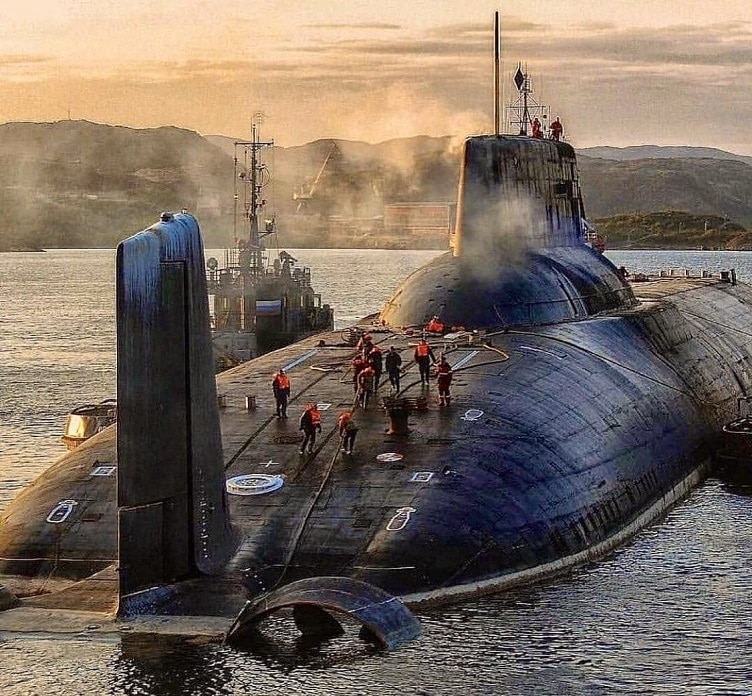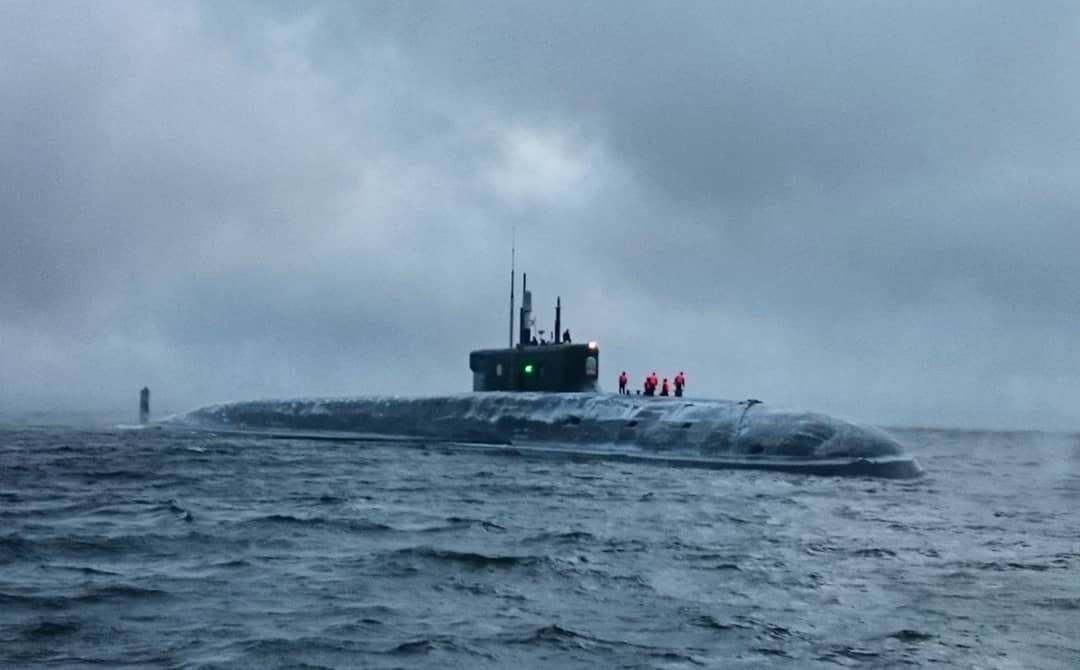The Russian Federation inherited a large submarine force from the Soviet Union. Since the end of the Second World War, this force had served as the core of the Soviet Navy. With the development of nuclear propulsion and nuclear-armed submarine-launched ballistic missiles (SLBMs), submarines rose to even higher prominence in the Soviet Navy. While it never achieved priority in the Soviet hierarchy of military services, the Russian Navy and particularly the naval nuclear deterrence forces rose in importance under Admiral Sergey Gorshkov, the Commander-in-Chief of the Navy from 1956 to 1985.
Since 1991, the Russian economy has contracted significantly. This has had severe adverse effects on the Russian submarine force. The economy’s poor performance has slowed the impressive construction rates of the Soviet Navy and has had numerous other harmful effects, including wage arrears, reduced operational tempo, and significant difficulties in disposing of retired nuclear-powered submarines. The number of subs affiliated to the submarine fleet decreased from 400 to 65 from 1985 to 2007. In addition, the number of sailors in active military service fell from almost half a million in 1985 to 146 thousand, many of whom were conscripts.

The changing world security environment has led Russia, like the United States, to change its security doctrine. In 2000, Russia issued a new National Security Concept, Military Doctrine, and naval policy. Both the National Security Concept and the Military Doctrine appear to underscore Moscow’s reliance on nuclear deterrence for the country’s security. It could be a positive sign for the submarine force’s development.
President Vladimir Putin updated naval strategy and signed a document in August 2017 called “Fundamentals of the State policy of the Russian Federation in the field of naval activities until 2030”. The most urgent priority noted in the document is both deterrence and punishment of foreign aggression. Indeed, the Russian Navy’s role in strategic deterrence receives much attention.
The Russian concept of strategic deterrence has a more comprehensive meaning than it does in traditional Western usage. It encompasses nuclear, conventional, and non-military deterrence tools before and during the conflict, and these Fundamentals articulate the Russian Navy’s essential role in this mission.
The Russian fleet has 217 warships of various types and 69 submarines, of which 45 operate on nuclear fuel. For comparison, at the beginning of 2020, the US Navy was armed with 290 units of military naval equipment, including 68 submarines, of which only 12 were equipped with ballistic missiles. With the agreed road map quarter of all defense, funds have gone to the restoration of the Navy. As a result, Russia’s shipbuilding capacity system has started to show progressive trends in producing several types of warships equipped with the most advanced equipment, including “Yasen” and Borei class submarines.
Borei- Class Submarines
The Borei-class (NATO: Dolgorukiy) SSBNs are instrumental to Russia’s post-Cold War strategic arsenal. First launched in 1996, the Borei-class replaces the ageing Typhoon-class, Kalmar-class (NATO: Delta III), and Delfin-class (NATO: Delta IV) submarines. Despite enlarging its defence budget, the Russian Navy faces a considerable backlog of modernization, maintenance, and dismantlement tasks. It has led to delays in the Borei-class construction program and forced the Russian Navy to retain two ageing Kalmar-class (NATO: Delta III) boats in service.
In 2017, Russia launched its first Borei-A class submarine, ‘Knyaz Vladimir,’ which features incremental upgrades to the original design. While expenses mount, the Russian government remains committed to the modernization program—viewed as imperative to maintain its nuclear deterrent. In April 2019, the Russian Ministry of Defense announced plans to build two new Borei-class nuclear submarines. These vessels are almost identical to the previous Borei-class submarines but will be firing long-range cruise missiles.

Russian Navy possesses three Project 955 “Borei-class” (NATO: Dolgorukiy) SSBNs. These submarines are 170 meters long and can travel up to 29 knots when submerged. Each vessel can carry 16 Bulava SLBMs, each containing multiple independently targetable reentry vehicle (MIRV) ballistic missiles. Feat The Borei-class submarines are considerably stealthier than their Soviet-era predecessors with uring pump-jet propulsion and other acoustic improvements,
Four submarines of the Borei class are so far delivered, of which two are with the Northern Fleet (“Yury Dolgorukiy” and “Knyaz Vladimir“), and two are sailing with the Pacific Fleet (“Aleksandr Nevsky” and “Vladimir Monomakh“).
Due to the growing tension in the Arctic, the plan for redistribution of the Borei-A (Borei A-class SSBNs feature upgraded stealth capabilities, better underwater manoeuvrability, and can carry extra submarine-launched ballistic missiles) submarines is modified. The decision to possibly relocate was taken after the Navy’s Arctic Umka exercise in March this year. Three nuclear submarines from the Northern Fleet surfaced through the ice simultaneously north of Franz Josef Land.
Originally under construction at the Sevmash yard in Severodvinsk, the three following subs of the class were supposed to be part of the Pacific Fleet’s 25th nuclear submarine division based on Kamchatka. Now, sources in the Defense Ministry said that at least one would instead be part of the 31st division based in Gadzhiyevo on the coast to the Barents Sea. That will either be “Knyaz Oleg” or “Generalissimus Suvorov.” “Knyaz Oleg” is currently undergoing sea trials and is expected to be handed over to the Navy later this year. It means that a more significant portion of Russia’s naval-based strategic nuclear warheads will be sailing the Barents Sea and the Arctic Ocean.
A Borei class submarine can carry 16 ballistic RSM-56 Bulava missiles, with each rocket expected to have four to six nuclear warheads. The Bulava SLBM is a sea-launched variant of the Topol-M and can reportedly be fitted with six to 10 nuclear multiple independently targetable reentry vehicle (MIRV) warheads.

Initially, eight Borei-class submarines were supposed to be built. Still, last year the Defense Ministry signed contracts with the Sevmash shipyard for an additional two, named “Dmitry Donskoy” and “Knyaz Potyomkin.”
Conclusion
Russia’s fourth-generation Borei-class was conceived in the early 1980s as a great leap forward in Russian submarine technology, a new, modern design over its ageing Delta and Typhoon predecessors. The Borei class is a marked improvement on its predecessor and appears more than capable of satisfying Russia’s submarine nuclear deterrence needs. In essence, the Borei class successfully performs a vital role in Russian nuclear deterrence. But it remains to be seen how, or if, the Russian Ministry of Defense plans to consolidate the Borei project to make it a financial solution for the long run.
Check out Naval Library App to find out the specifications of the Borei-class submarines.





